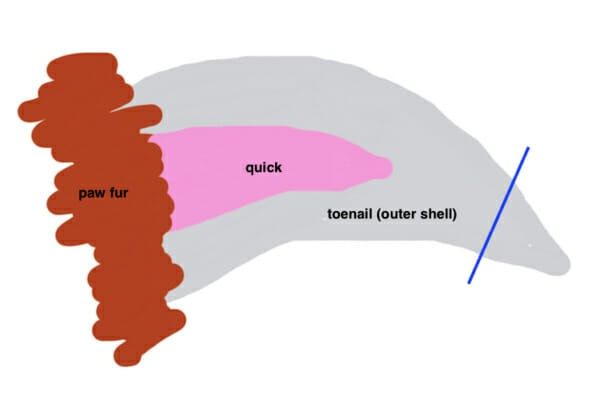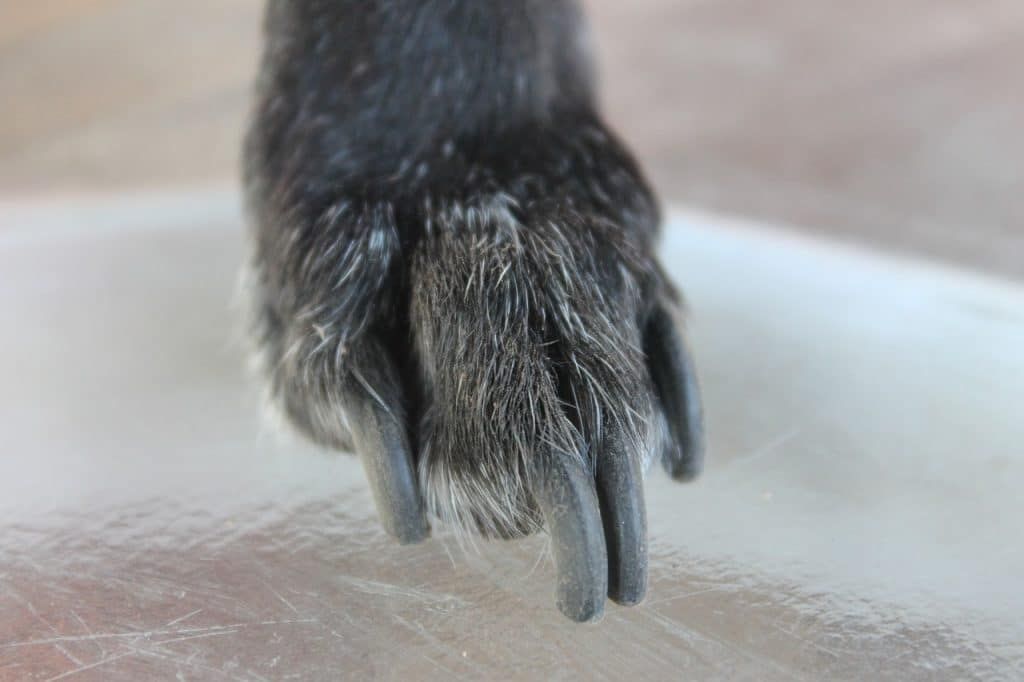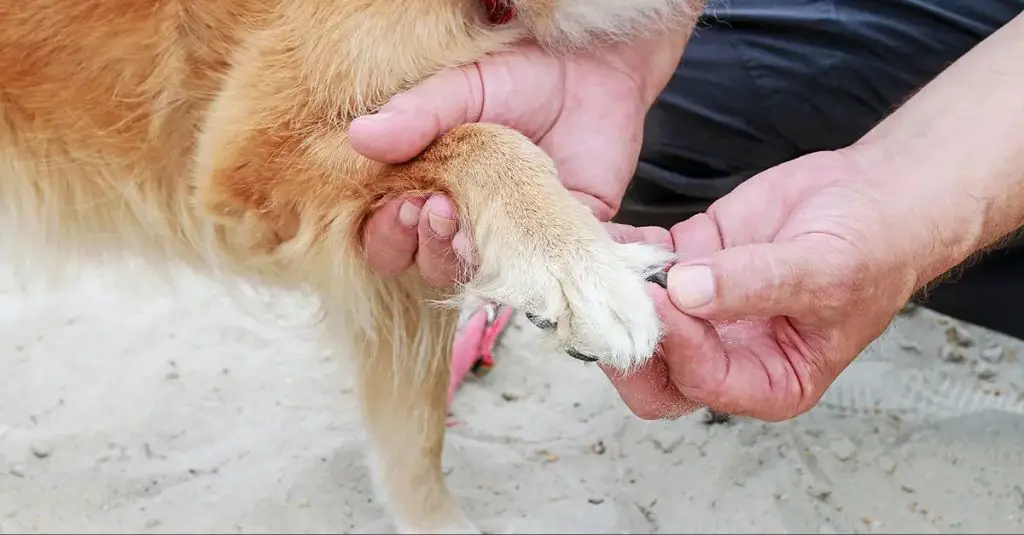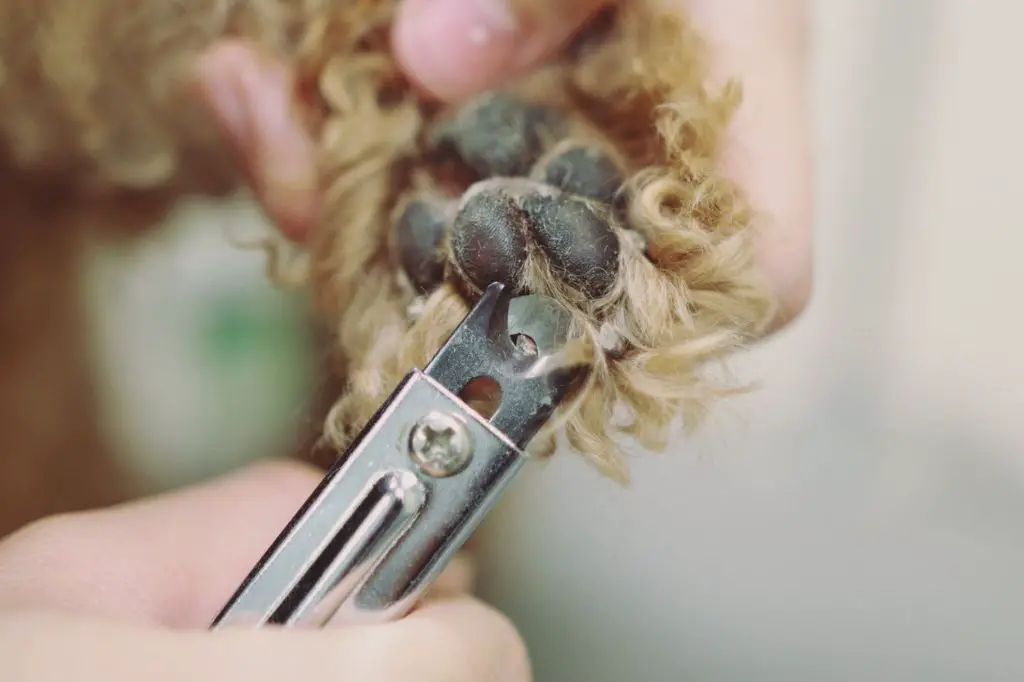Introduction
Dog nails may seem like a small part of your pet’s anatomy, but they play an important role in your dog’s health and wellbeing. Nails act as an extension of the skeletal system and assist with balance, traction, digging, and scratching. Keeping your dog’s nails a healthy length and free of defects helps prevent pain, mobility issues, infections, and other problems.
It’s important for dog owners to routinely check their pet’s nails and distinguish between healthy nails and unhealthy ones. Learning the signs of unhealthy nails and addressing issues early can prevent more serious complications. With some preventative care and dedicated nail maintenance, you can help keep your dog’s nails in tip-top shape.
Anatomy of Dog Nails
A dog’s nails are made up of several parts:
- The quick – This is the living tissue inside the nail that supplies blood vessels and nerves. It’s pinkish in color.
- Nail bed – The sensitive area under the nail where the quick ends. It has many blood vessels and nerves.
- Nail plate – The hard outer part of the nail that overlays the quick. It’s made up of keratin, the same protein that makes up human fingernails.
- Matrix – The part of the quick that produces new nail cells and helps the nail grow. It’s located near the cuticle.
- Cuticle – The soft tissue that surrounds and protects the nail matrix at the base of the nail.
A dog’s nails consist of a bony core surrounded by the nail plate. The nail plate is made up of many nail layers that adhere together. As new nail cells are produced by the matrix, the older nail plate is pushed outward and the nail grows longer.
Signs of Healthy Nails

When a dog’s nails are healthy, they should exhibit the following characteristics:
Color
Healthy nails will have a light color, usually white or pale pink, with a darker circle showing through near the base of the nail. The overall nail should have a uniform color throughout.
Thickness
Healthy nails have just the right thickness – not too thin or too thick. They should be rigid enough not to bend or flex easily, indicating proper structural integrity. Thicker nails are generally stronger and less prone to breaking or splitting.
Smoothness
The outer surface of a healthy nail will be smooth to the touch with no roughness or irregular textures. The edges should be rounded without any jaggedness. There should be no cracks, chips, or grooves present in a smooth, healthy nail.
Signs of Unhealthy Nails
There are a few key signs that may indicate your dog’s nails are unhealthy:
Discoloration
Unhealthy nails may appear discolored. A blackened or very dark brown color can signal a fungal infection. Paler coloring, especially towards the base of the nail, can be a sign of inadequate blood flow.
Thickness
Excessively thick nails can be a sign of poor health. Healthy nails should be relatively thin. Thick nails may indicate an issue like a nutritional deficiency or fungal infection.
Roughness
Rough, brittle nails that are prone to cracking or splitting often stem from nutritional imbalances. This roughness makes nails more vulnerable to injuries and infections.
Overgrown
Overgrown nails that curl and twist are very unhealthy. They put pressure on the toe and can cracked or torn. Overgrown nails imply the dog’s activity level is too low or nails aren’t being trimmed properly.

Causes of Unhealthy Nails
There are several potential causes of unhealthy dog nails, including:
Nutrition
A poor diet lacking in certain vitamins and minerals can contribute to brittle, cracked nails. For example, deficiencies in zinc, linoleic acid, and vitamins A and D can affect nail health. Ensuring your dog eats a balanced diet with all essential nutrients can help keep nails strong.
Activity Level
Inactive dogs that don’t get much exercise can develop overgrown nails that curve and split. Regular activity such as walking and running helps wear down nails naturally. Dogs that are very active on hard surfaces may also wear down nails too much, causing tearing and weakness.
Genetics
Some dog breeds are genetically prone to nail problems. For example, black nails are more prone to brittle cracks, while white nails tend to grow quickly and over-curve. hereditary factors can affect nail thickness, curve, and strength.
Injury
Injuries from play or accidents can damage nails. Cracked, torn, or broken nails are more likely to become infected. Blunt trauma can cause nails to separate or uplift from the nail bed. Preventing injuries through supervision and safe play can reduce nail problems.
Health Risks
Unhealthy nails can lead to significant health risks for dogs. The most common risks include:
Pain
Overgrown, cracked, or broken nails are very painful. The quick (the living part inside the nail) is exposed, causing extreme discomfort. Dogs may limp, lick their paws excessively, whimper, or become reluctant to walk or play.

Infection
Cracked or broken nails are prone to infection. Bacteria can enter through the nail bed and cause inflammation, swelling, discharge, and fever. Infections need antibiotic treatment and can spread to other areas like the paw pads or leg.
Decreased Mobility
Excessively long nails force dogs to walk abnormally by shifting their weight back. This leads to strain on their joints and ligaments. It becomes very difficult for them to walk, run, play, jump, or go up stairs. Lack of activity further reduces their mobility.
Left untreated, unhealthy nails significantly impact dogs’ comfort and quality of life. It’s critical to catch issues early and seek veterinary care to prevent complications.
When to Seek Help
It’s time to seek professional help from your veterinarian if you notice any of the following signs in your dog’s nails:
Bleeding
Bleeding around the nail bed is not normal and can indicate an infection or nail injury. Any bleeding should be evaluated right away, as it risks attracting dirt and debris that can worsen the problem.
Nail Abnormalities
Look out for nails that are cracked, brittle, misshapen, discolored, or overgrown. Abnormal nail growth or appearance often signals an underlying health issue.
Lameness
If your dog is limping or appears to be in pain around their paws or nails, they need to be examined by a vet. Lameness can result from nail trauma, embedded foreign objects, infections, and more serious conditions like bone cancer.
Don’t delay when you notice these red flag symptoms in your dog’s nails. Schedule a veterinary visit right away for appropriate treatment and pain relief.
At-Home Care
There are some simple steps dog owners can take at home to care for their dog’s nails and promote healthy growth:
Trimming
Trimming your dog’s nails regularly with a nail clipper designed specifically for dogs helps keep them at a proper length. Nails should be trimmed when they start to click on the floor as your dog walks. Take care not to trim too far back to avoid hitting the quick, which contains blood vessels and nerves.
Filing
Using a nail file to smooth and round the edges of your dog’s nails after trimming can help prevent cracking or splitting. Look for nail files made for dogs that won’t be too abrasive on their nails.
Moisturizing
Applying a dog-safe moisturizing balm or oil to your dog’s nails helps condition them and prevent brittleness and cracking. Make sure to rub it thoroughly into the entire nail, cuticle, and paw pads. Do this several times per week for extra dry nails.
With proper at-home nail care, you can help promote healthy nail growth and prevent issues with cracking, overgrowth, and splitting.
Professional Care
If your dog’s nails are severely overgrown, malformed, or infected, professional care from a veterinarian or certified dog groomer may be necessary. Here are some procedures they may perform:
Veterinary Procedures

For infected or injured nails, a vet may prescribe antibiotics or anti-inflammatory medications. They can trim overgrown nails back to a normal length. In severe cases, partially or fully removing the nail (onychectomy) may be required. This is done under anesthesia to prevent pain and bleeding.
Vets can also correct ingrown or malformed nails that are causing pain or injuries. This may involve cutting part of the nail away, using chemicals to soften or detach the nail, or surgically removing part of the nail bed.
Professional Grooming
Certified dog groomers are trained to safely trim overgrown nails. Using specialized clippers and files, they’ll cut the nails back to an appropriate length and shape the tips to be smooth and even.
For dogs with light-colored nails where the quick is visible, groomers can carefully trim off small amounts at a time. For dark nails, they avoid cutting too short by focusing on trimming the tips only.
Professional grooming every 4-6 weeks can keep your dog’s nails maintained at a healthy length. Groomers can also buff and file away rough edges that might otherwise snag or scratch.
Prevention
There are several ways to help prevent unhealthy nails in dogs:
Diet
Feeding your dog a balanced diet rich in nutrients like omega fatty acids, vitamin E, zinc, and biotin helps keep nails strong and healthy. These nutrients contribute to nail growth and strength. Consult your veterinarian for diet recommendations based on your dog’s needs and activity level.
Exercise
Getting regular exercise, especially on surfaces like concrete or pavement, helps wear down nails naturally. Try taking your dog for daily walks and having active playtime.
Trimming Schedule
Trimming your dog’s nails at a consistent interval helps avoid overgrowth. Long quicks and nails are more prone to cracking and injury. Aim to trim every 2-4 weeks for average dogs. Senior dogs and those confined indoors may need more frequent trims. Only trim a small amount at a time to avoid hitting the quick.